In 2018, the researchers published their original study about galaxy NGC 1052-DF2 — DF2 for short — the first known galaxy to contain little or no dark matter. The finding was highly significant because it showed that dark matter is not always associated with traditional matter on a galactic scale. It also ruled out several theories that said dark matter is not a substance but a manifestation of the laws of gravity on a cosmic scale.
Invisible dark matter typically dominates the makeup of galaxies. Finding an object without dark matter was unprecedented and led to a good deal of debate within the scientific community.
“If there’s one object, you always have a little voice in the back of your mind saying, ‘but what if you’re wrong?’” said team leader Pieter van Dokkum, the Sol Goldman Family Professor of Astronomy at Yale. “Even though we did all the checks we could think of, we were worried that nature had thrown us for a loop and had conspired to make something look really special whereas it was really something more mundane.”
Now, a pair of new studies appearing in The Astrophysical Journal Letters supports the team’s initial finding.
“The fact that we’re seeing something that’s just completely new is what’s so fascinating,” said Yale graduate student Shany Danieli, who first spotted the galaxy about two years ago. “No one knew that such galaxies existed, and the best thing in the world for an astronomy student is to discover an object, whether it’s a planet, a star, or a galaxy, that no one knew about or even thought about.”
Danieli is the lead author of one of the new studies. It confirms the team’s initial observations of DF2, using more precise measurements from the W.M. Keck Observatory’s Keck Cosmic Web Imager. The researchers found that the stars inside the galaxy are moving at a speed consistent with the mass of the galaxy’s normal matter. If there were dark matter in DF2, the stars would be moving much faster.
Van Dokkum is the lead author of the other new study, which details the discovery of a second galaxy devoid of dark matter. That galaxy is named DF4.
“Discovering a second galaxy with very little to no dark matter is just as exciting as the initial discovery of DF2,” van Dokkum said. “This means the chances of finding more of these galaxies are now higher than we previously thought. Since we have no good ideas for how these galaxies are formed, I hope these discoveries will encourage more scientists to work on this puzzle.”
Both DF2 and DF4 are part of a relatively new class of galaxies called ultra-diffuse galaxies (UDGs). They are as large as the Milky Way but have between 100 to 1,000 times fewer stars. This makes them appear fluffy and translucent — and difficult to observe.
Ironically, the lack of dark matter in these UDGs strengthens the case for dark matter, the researchers say. It proves that dark matter is a substance that is not coupled with normal matter since they can be found separately.
In addition to van Dokkum and Danieli, team members include Roberto Abraham of the University of Toronto, Aaron Romanowsky of San Jose State University, and Charlie Conroy of Harvard.
Danieli is leading a wide area survey with the Dragonfly Telephoto Array — a telescope designed by van Dokkum — to look for more examples in a systematic way, then observe candidates again using the Keck telescopes.
“We hope to next find out how common these galaxies are and whether they exist in other areas of the universe,” Danieli said. “We want to find more evidence that will help us understand how the properties of these galaxies work with our current theories. Our hope is that this will take us one step further in understanding one of the biggest mysteries in our universe — the nature of dark matter.”
Reference:
- “Still Missing Dark Matter: KCWI High-resolution Stellar Kinematics of NGC1052-DF2” by Shany Danieli, Pieter van Dokkum, Charlie Conroy, Roberto Abraham and Aaron J. Romanowsky, 27 March 27 2019, The Astrophysical Journal Letters.
DOI: 10.3847/2041-8213/ab0e8c - “A Second Galaxy Missing Dark Matter in the NGC 1052 Group” by Pieter van Dokkum, Shany Danieli, Roberto Abraham, Charlie Conroy and Aaron J. Romanowsky, 20 March 27 2019, The Astrophysical Journal Letters.
DOI: 10.3847/2041-8213/ab0d92

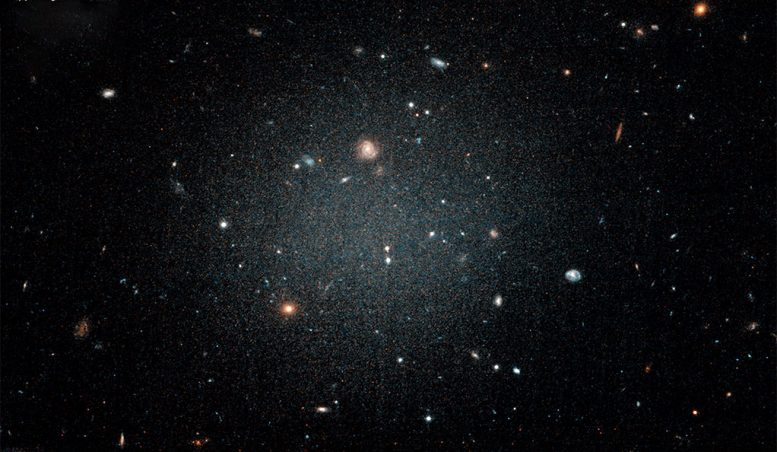
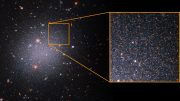
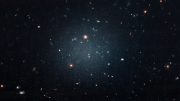
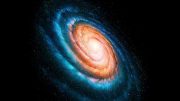
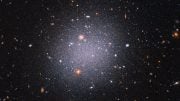

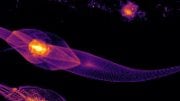
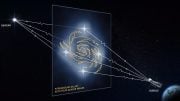
What if two galaxies crashed together at high speeds and the dark matter of those galaxies kept moving outward away from galaxies. I have heard of that happening before.
Robert – I have hear before that McDonald’s McRib sold for $1.
The new papers use a different technique to study the star field velocity dispersion spectroscopically, instead of a handful of globular clusters, and the three sets of measurements (original galaxy@old method, original galaxy@new method, new galaxy@new method) correspond well. And since their dispersion is 1/5 or so of what the average expected dispersion would be, they definitely see a lack of dark matter.
@Robert: Besides the Bullet Cluster that is the iconic stripping of gas – so dark matter stands out – from colliding galaxies, there are a few similar observations I believe.
The fun thing is that in the last few years the LCDM inflation cosmology model has been the best in simulations down to dwarf galaxies [ http://www.sciencemag.org/news/2018/05/galaxy-simulations-are-last-matching-reality-and-producing-surprising-insights-cosmic ], and while I dunno if these ultra dilute galaxies have been studued the general result looks encouraging but bewildering:
“Astrophysicists had assumed that a galaxy’s size is determined by the spin of the dark matter halo enveloping it, with faster-spinning haloes producing larger, more diffuse galaxies, she says. But simulations show no such connection, she adds. “We’re now at a loss,” Faber says. “What makes a big galaxy big and a small galaxy small?””
Here seems to be the current generic problem:
“Perhaps the simulations’ single biggest lesson so far is not that scientists need to revise their overarching theory of cosmology, but rather that problems lurk in their understanding of astrophysics at smaller scales.”
A recent British paper suggested that dark matter may consist of antimatter. Could the galaxies lacking dark matter be a result of matter – antimatter annihilation ?
Silly scientists believing they’ve investigated something novel when the Vedas have described dark matter for several thousand years. Even Urantia discusses what it is. But leave it to ignorant people to explain something already explained. Any AP person can go t the zones too. So funny.
It’s pretty clear now that dynamic nature of galaxies like the Milky Way are manifested by at least one Black Hole at its core, generating an intense,spinning gravitational sink that is interacting in tandem with all of the other galaxial matter surrounding it. That gravitational sink intensifies, either simply due to a compounding effect of gravity or due to the spinning of the galaxy generating an electro-magnetic field.
Galaxies such as DF2 have no spin and, presumably, no Black Holes. So do not generate the intensified gravity phenomenon that we refer to as “Dark Matter”.
Dark matter is simply those things that we are not to observe. As a species, we evolved far too quickly, and thus never matured over the thousands of millennia that it takes to survive. We as a species are being contained by a universe of far more biologically matured species who have realized the damage we world cause if we made it too far outside of our solar system. What we refer to as “Dark Matter”, something we know is there, has mass, but we are unable to observe, is simply the veil covering what we probably wouldn’t be able to handle without trying to destroy.
Hasn’t there been a study proving that there may be more dark matter in DF2 than initially believed?
Dark matter is a supersolid that fills ’empty’ space, strongly interacts with ordinary matter and is displaced by ordinary matter. What is referred to geometrically as curved spacetime physically exists in nature as the state of displacement of the supersolid dark matter. The state of displacement of the supersolid dark matter is gravity.
The supersolid dark matter displaced by a galaxy pushes back, causing the stars in the outer arms of the galaxy to orbit the galactic center at the rate in which they do.
Displaced supersolid dark matter is curved spacetime.
The reason for the mistaken notion the galaxy is missing dark matter is that the galaxy is so diffuse that it doesn’t displace the supersolid dark matter outward and away from it to the degree that the dark matter is able to push back and cause the stars far away from the galactic center to speed up.
It’s not that there is no dark matter connected to and neighboring the visible matter. It’s that the galaxy has not coalesced enough to displace the supersolid dark matter to such an extent that it forms a halo around the galaxy.